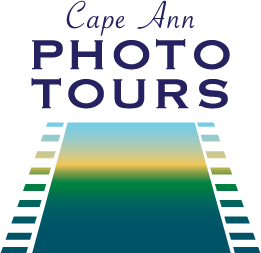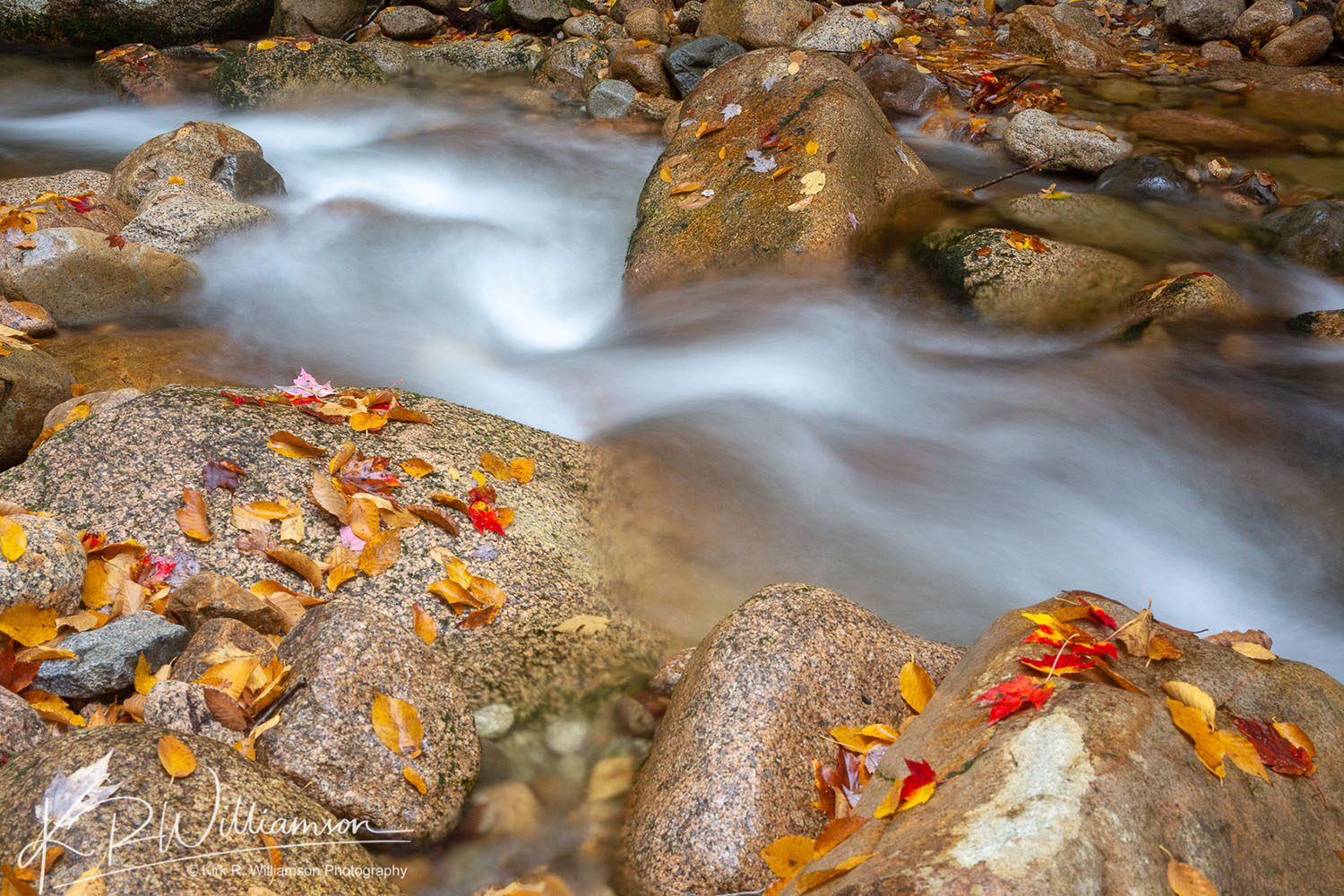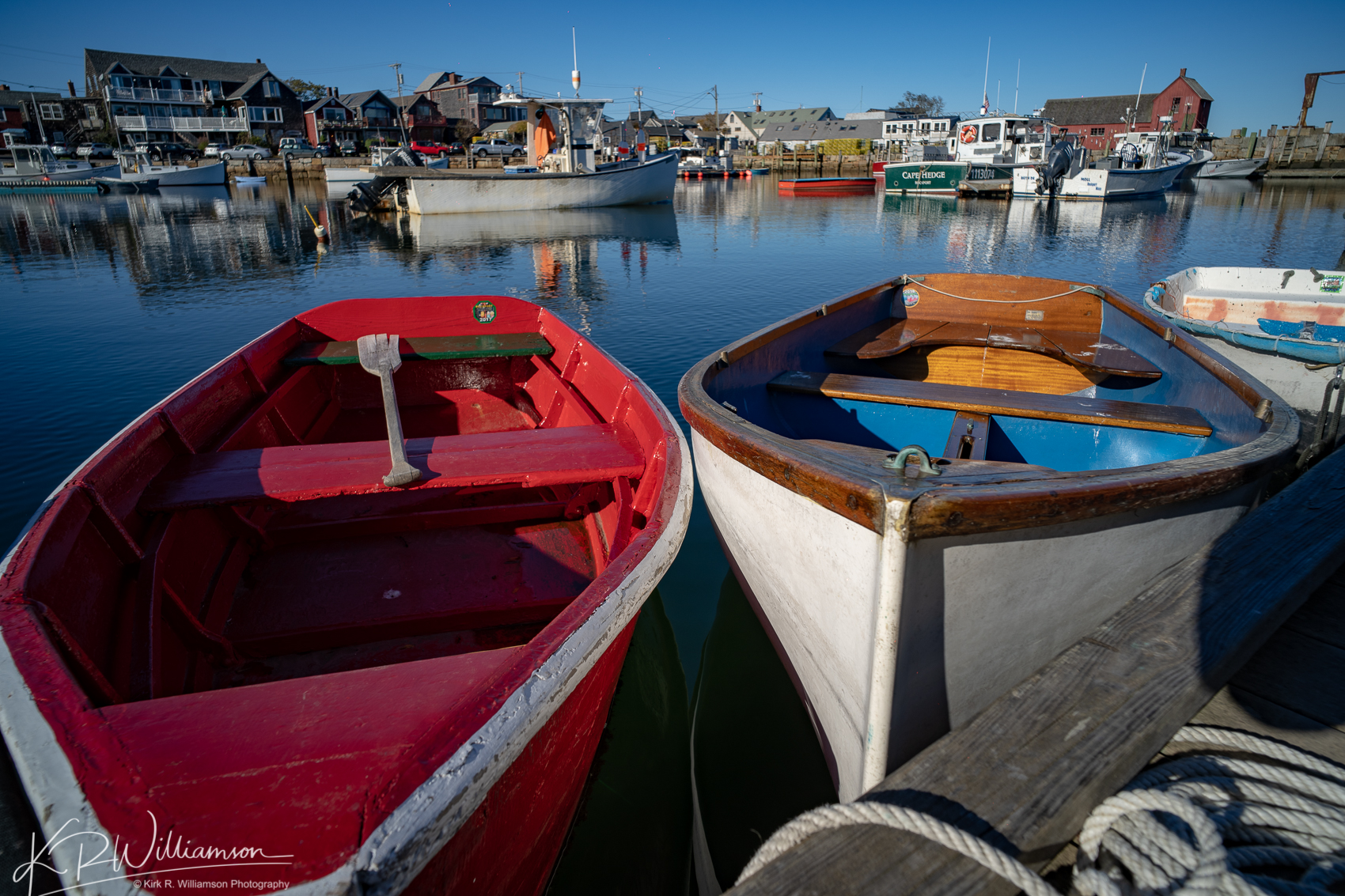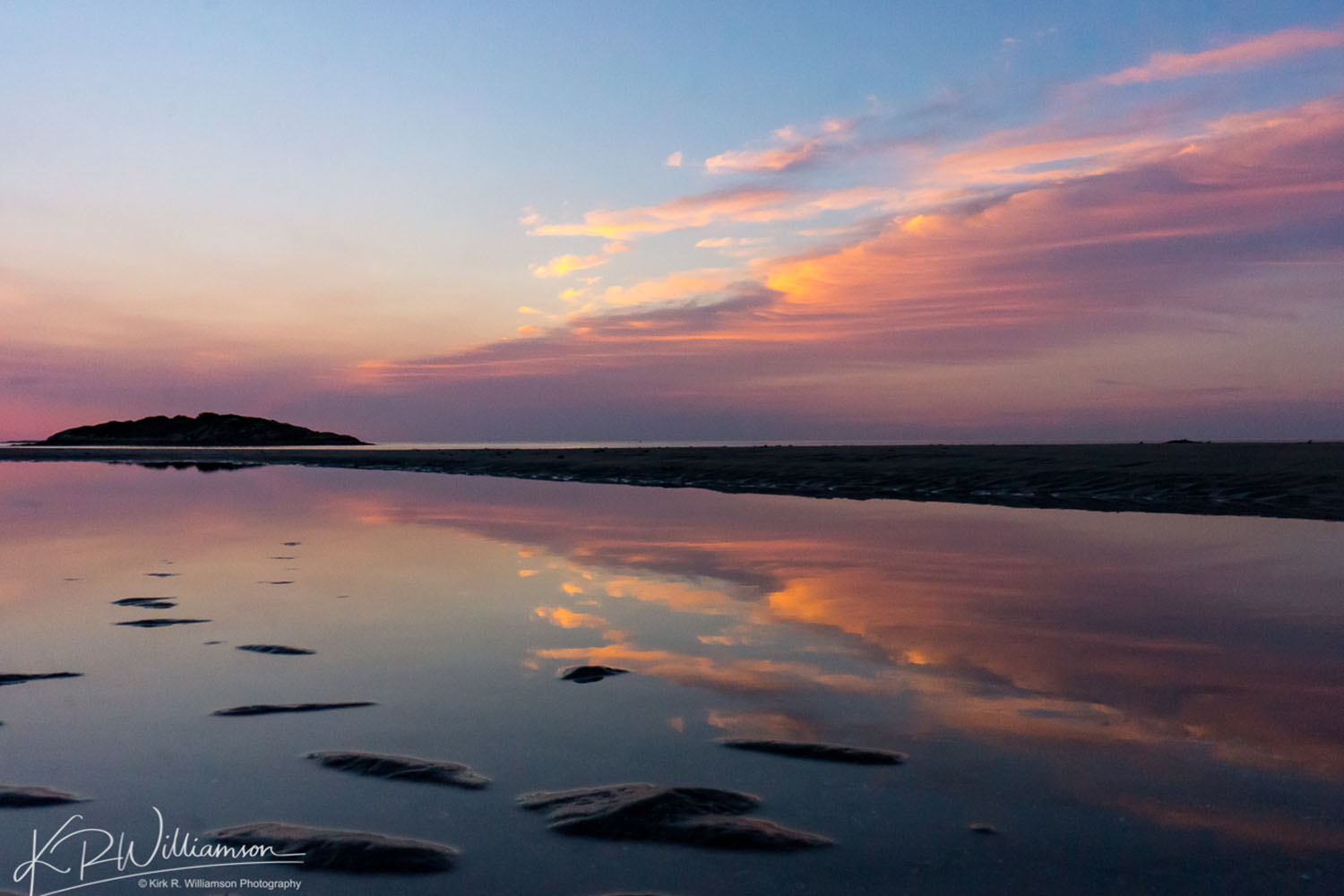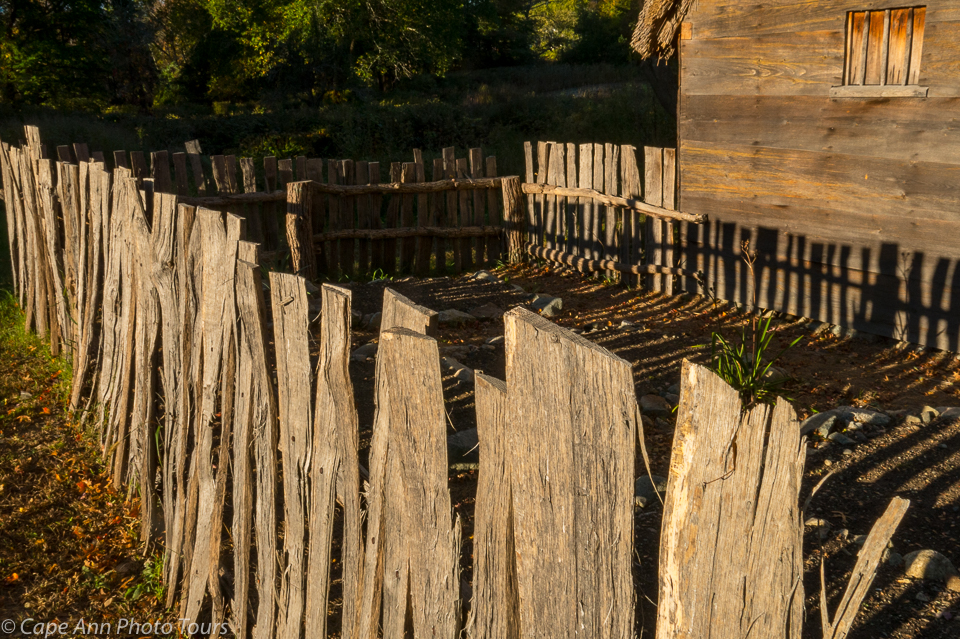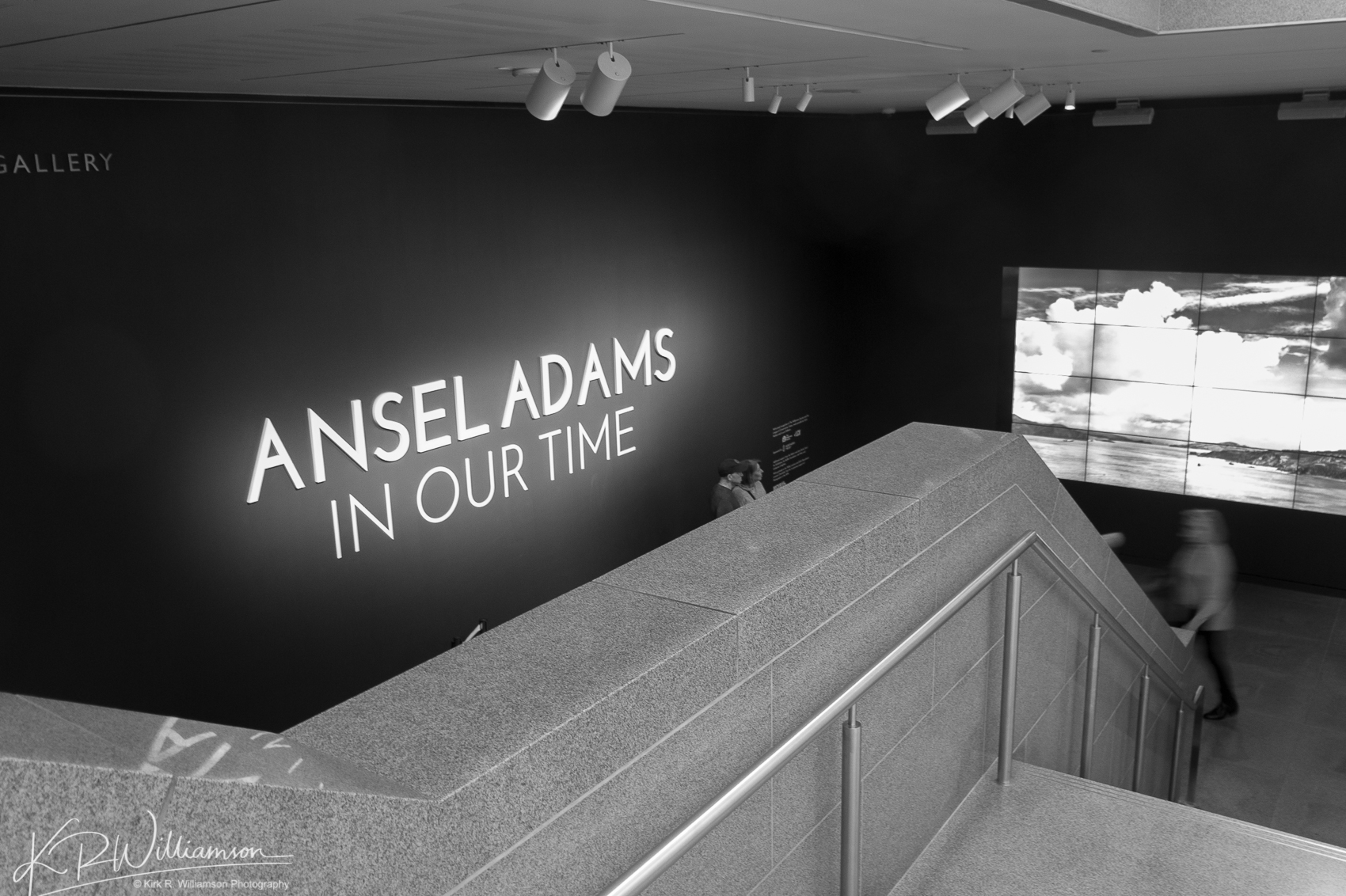
The B&W images that Adams created back many years ago have always generated an emotional response in me. In my college years I started reading about him and looking at his images. His books were then not far behind. I started reading his Camera series with much of it over my head. But, it was Adams after all and there was no better photographer in my mind. His work really started me on my career path.
All that being said, I have probably seen most of Adams’ images either in books, calendars, or exhibit. So the idea of a new exhibit was exciting to me. What more could they do? The last exhibit I attended was the Adams exhibit at the Peabody Essex Museum in Salem. There were only a few of his most famous images plus some very large murals. It was underwhelming. I was disappointed. So this new one was exciting plus it was the MFA in Boston.
I wish I had a photo of it but as we went down stairs to the exhibit the emotions started to come back remembering my close connection to many of his images. The first thing to greet you before you go in is a giant mural of Adams atop his woody in the 40’s planning a shot with his 8×10 view camera. I have seen it before but not this large. My emotional connection came flooding back. There was the tall skinny Adams in his younger years at the height of his image making – wow!
Then my wife and I went into the exhibit and started to see that not only were Adams’ images present but also the works of other photographers (like Muybrige and Watkins) that influenced him. Then also contemporary photographers rounded out the exhibit.
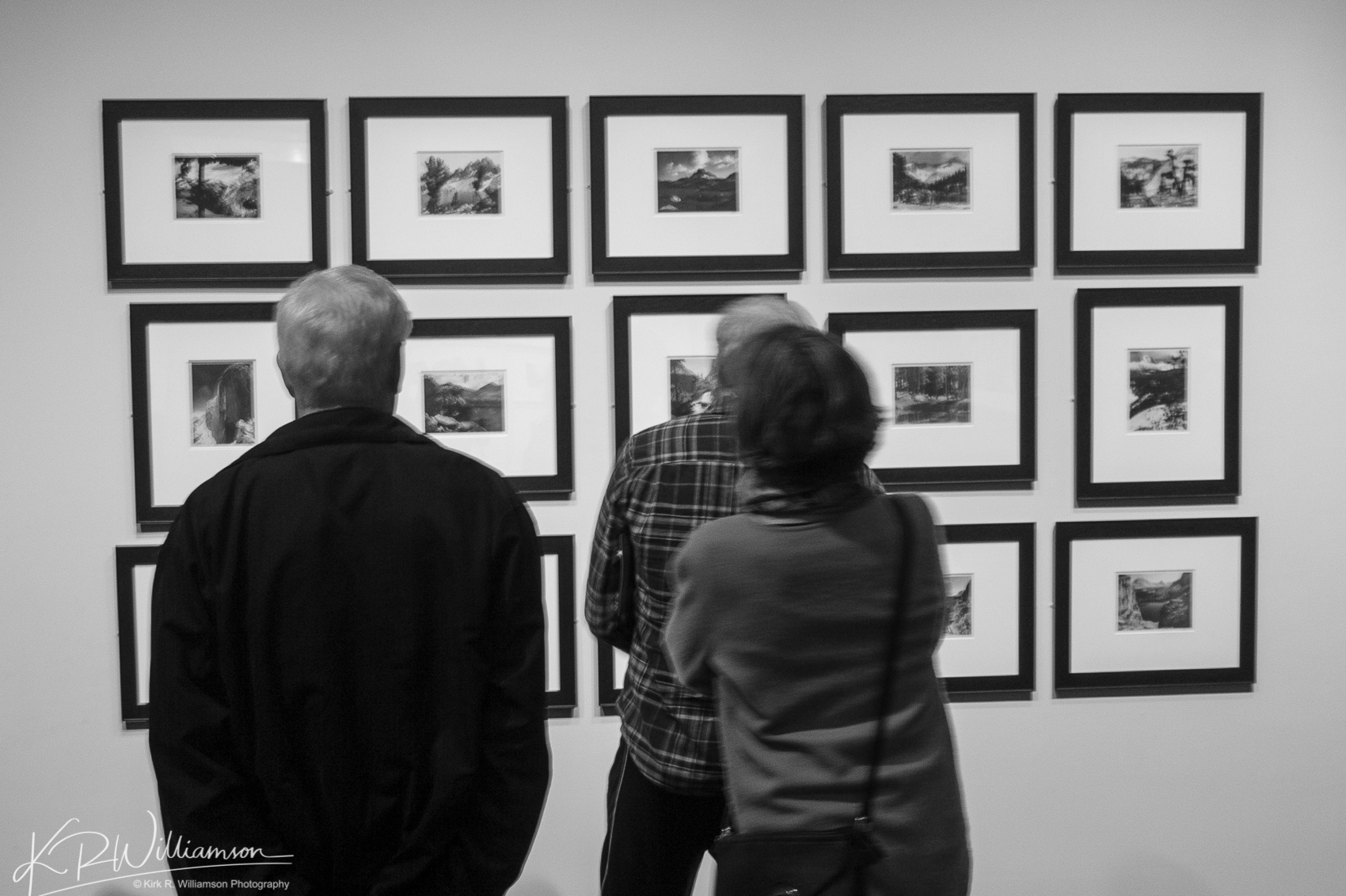
The MFA has in it’s collection some 450 prints by Adams which is part of the Lane Collection and these are the images used for this exhibit. They are mixed with works by other photographers both contemporary and before and during Adam’s time. Thus the title Ansel Adams, In Our Time.
Overall the experience is pretty good but the prints from the Lane Collection are not as I expected. Many are old and small and the larger ones seem to be either printed too deep or under lit in the exhibition. Thus a disappointment to me. One of my favorites is Mt. Williamson (a great name) from Manzanar, CA. The print was in pretty good shape and a pleasure to look at.
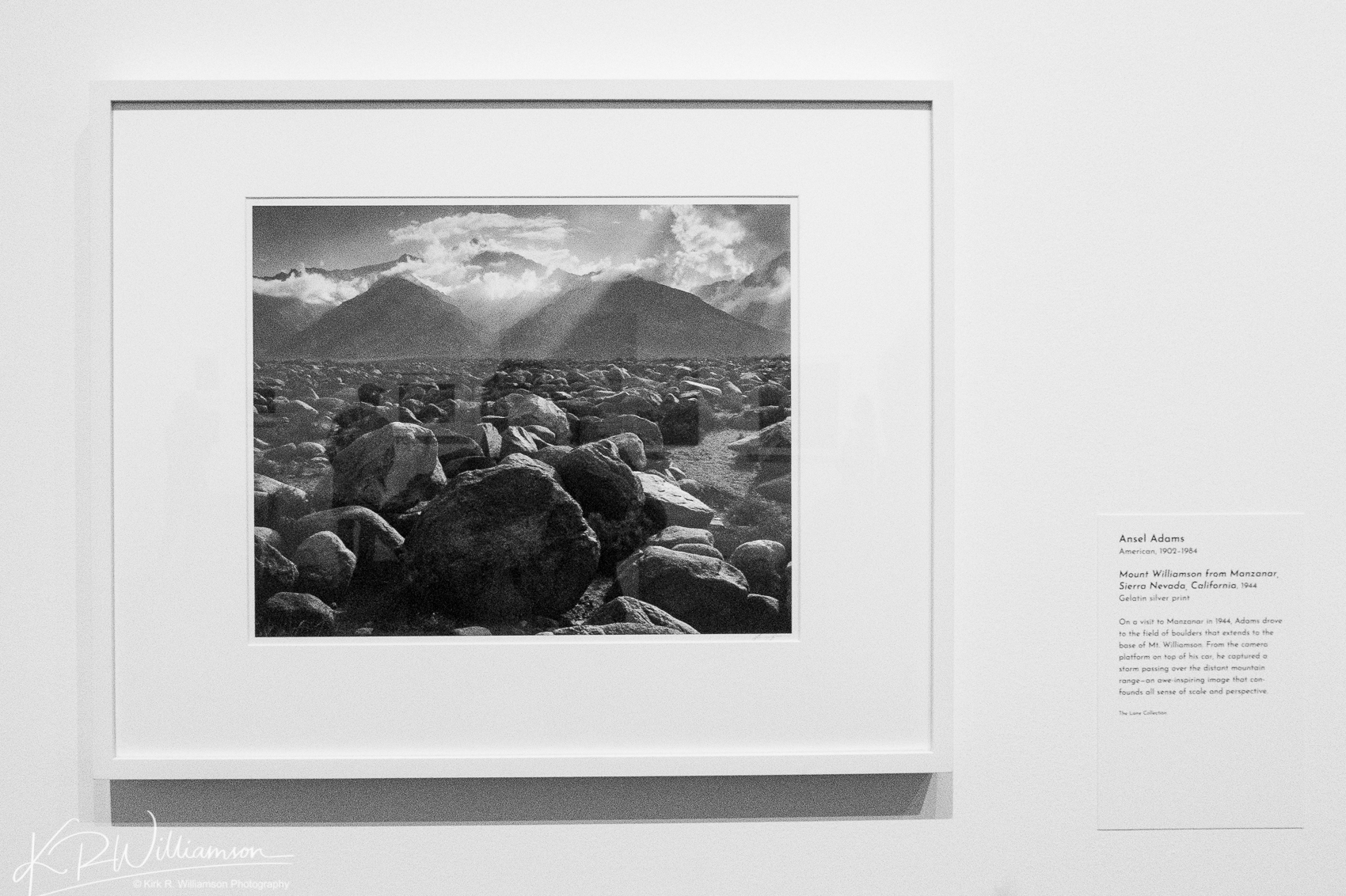
I wish this image was larger than 11×14 but what can you do. I have seen some of the contemporary work and the pano’s with old images inserted were pretty cool. The large burned forest images were also nice. They went along with Adam’s image of the same.
The work I was most distraught over was that of Catherine Opie. They were two large extremely out of focus images which were done that way on purpose. Thus to show how recognizable certain areas of Yosemite were because of the images Adam’s had made. In my opinion a complete waste of wall space. They even had a video interview with the “artist” sorry, another waste of time. I walked on. Some other large works were double exposures or layered images of recognizable scenes for Yosemite (I think) might have been the Snake River in Wyoming.
Overall the experience was pretty good but not what I expected.
As you walk out you are forced into the gift shop – to be expected I guess. Then you get to see one of my all time favorite images made by Adams is a 20 ft. high mural. Wow it was so cool. I made my own interpretation of it.
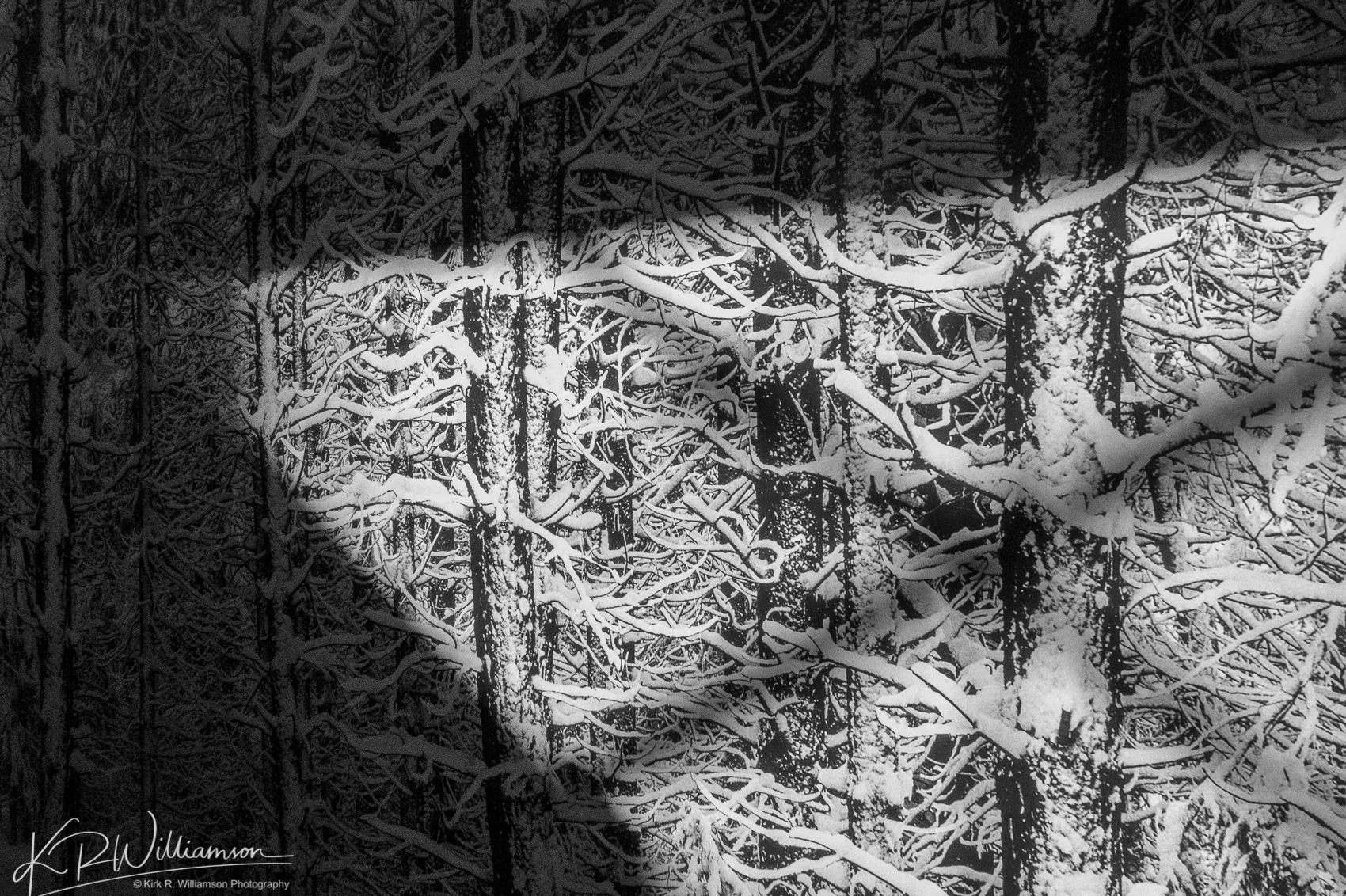
I absolutely love this photograph of his. It was insane to see it the size of an enormous wall. Then we were off to the cafeteria for an expensive lunch. The Adam’s imagery was all around us.
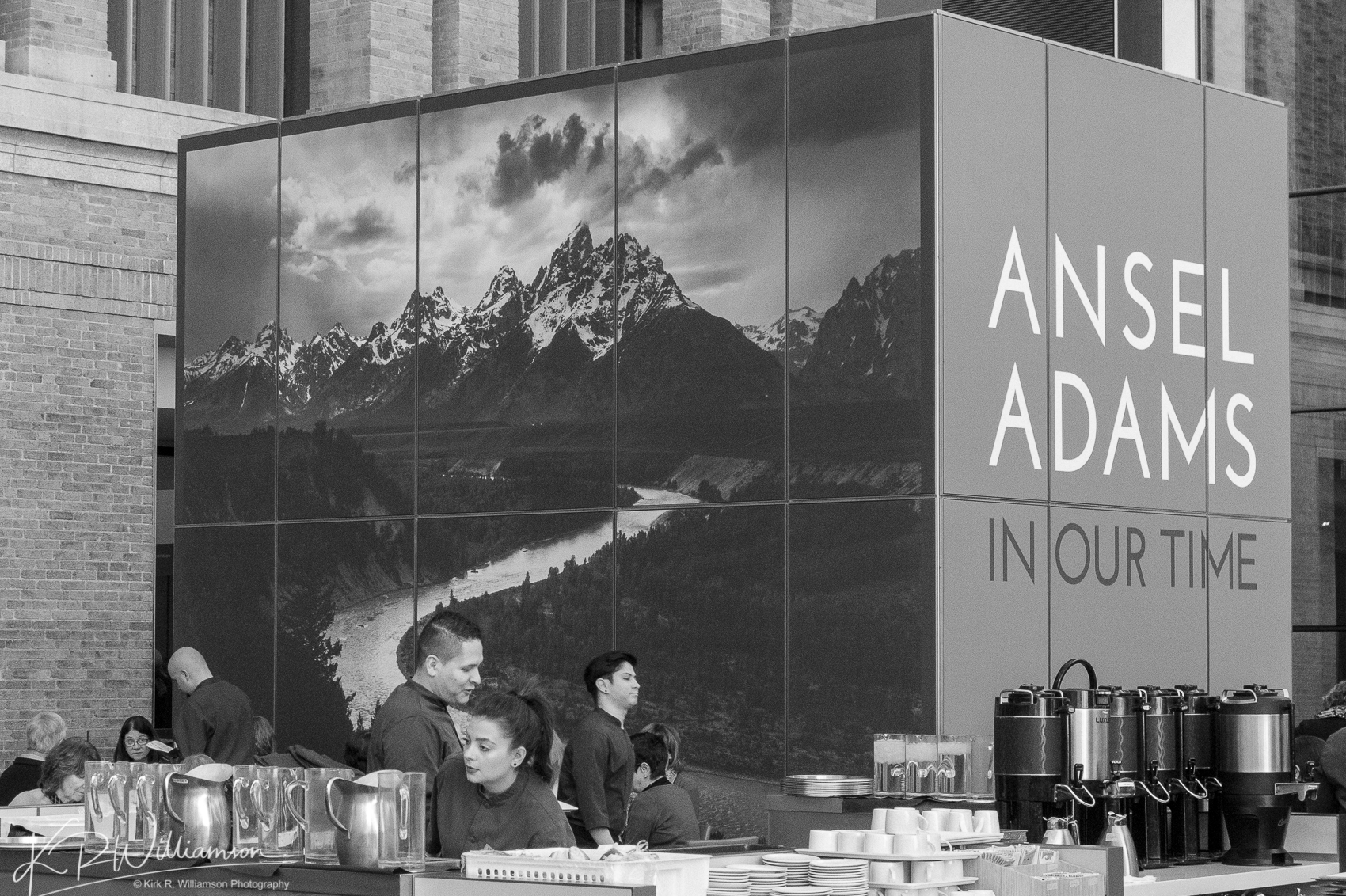
You could not escape it. This image here of the Snake River and the Grand Teton’s is one of my all time fav’s.
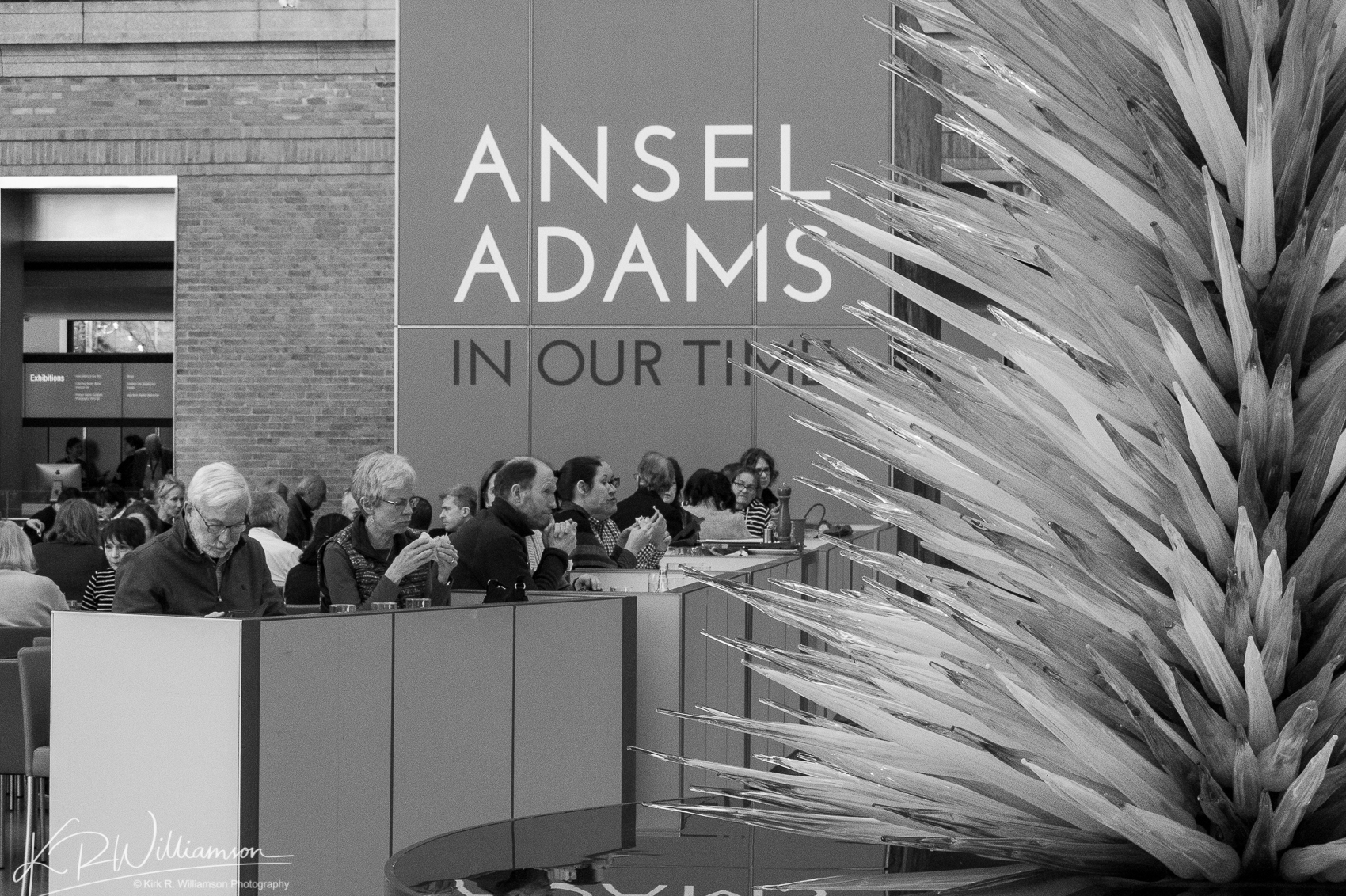
Folks enjoying an expensive lunch.
The exhibit goes until Feb. 24, 2019. So go on in and enjoy and make up your own mind as to what you think of it. As a huge Adam’s fan boy I was not overly impressed. The theme was an ok idea but poorly executed. Why they had to go find the weirdest contemporary imagery to go with it is beyond me. The influenced contemporary photographers should have been represented by work that clearly shows Adam’s influence not bizarre imagery. The work of Muybridge and Watkins that influenced Adam’s – great idea!
I think you get the picture – sorry for the pun, couldn’t resist.
